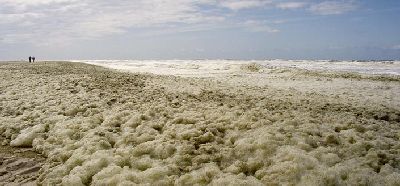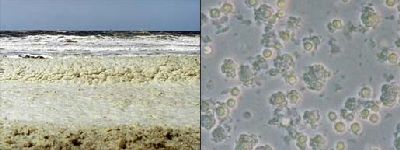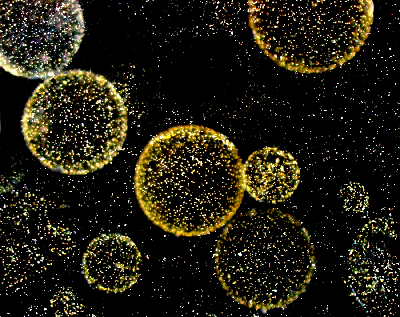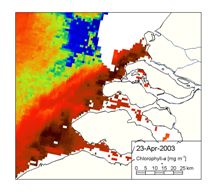3. Eutrophication & Health (5/5)
Phaeocystis blooms from space
When you walk on the beach you might observe a special effect of algal bloom: On a windy day in Spring large heaps of foam are blown to the beach from the coastal sea. This is result of a bloom of the flagellate Phaeocystis Globosa that has bloomed in the weeks before and is now decaying due to lack of nutrients.
The Phaeocystis is first growing in seperate cells. When the bloom is in full swing, the cell get together in a globule (see image at the right) that contains gelatine.The globules can be seen in the water and the foam as small balls of only a few mm.
When the algae die, the gelatine and wind combine to make a kind of slimy foam that is blown to the beach.
This species is not toxic, but can be very harmful. When the bloom is very intens, the large decaying biomass might cause Oxygen depletion in the water, resulting in loss of plant and animals. To protect mussel farms in Zeeland, these blooms are monitored each spring. Within 12 hours from the satellite observation a warning for a bloom can be issued.




